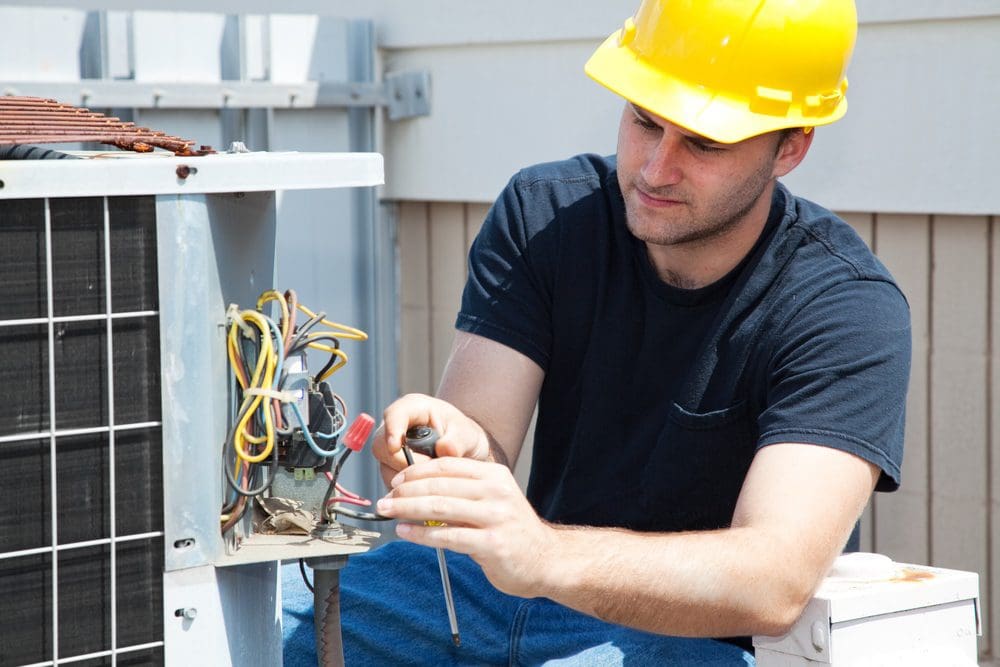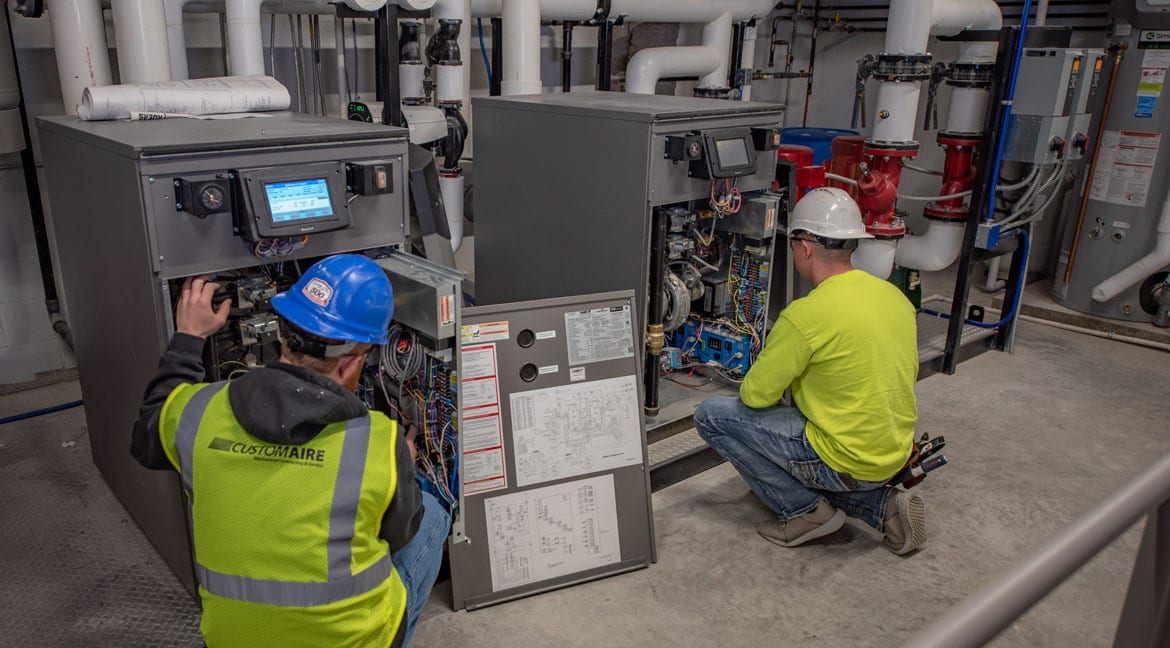How a Heatpump and Heater Collaborate to Maximize Your Home's Heating Performance
Recognizing exactly how a heatpump and heating system interact is necessary for property owners seeking reliable heating remedies. Each system has its staminas, providing a well balanced approach to home convenience. The heatpump masters moderate temperature levels, while the furnace provides quick warmth throughout extreme cold. This harmony not just decreases power costs yet also improves the lifespan of both devices. What factors affect this cooperation, and exactly how can home owners maximize their benefits?
Recognizing Warmth Pumps: Exactly How They Function
Although many individuals may be not familiar with their internal workings, heatpump play an essential function in modern-day furnace. These gadgets run by moving heat from one location to one more, using the concepts of thermodynamics. In cooler months, a heatpump extracts heat from the outside air, ground, or water, and transfers it inside your home to warm up the space. On the other hand, throughout warmer months, it can turn around the procedure, working as an air conditioner by removing warm from inside to the outside.Heat pumps contain an evaporator, condenser, compressor, and development shutoff. The cooling agent within the system soaks up warmth as it vaporizes at reduced temperature levels and stress. The compressor after that boosts the stress and temperature level of the cooling agent, enabling it to release heat as it condenses. This efficient process can greatly lower power usage contrasted to typical home heating techniques, making heat pumps a lasting option for environment control in homes.
The Function of Furnaces in Home Heating
Furnaces play an important role in home heating by giving a trustworthy resource of warmth throughout the chillier months. They operate by generating warmth via combustion or electric resistance, dispersing it throughout the home by means of ducts or glowing systems. The performance of a heating system is typically gauged by its Annual Gas Usage Efficiency (AFUE) score, which shows exactly how effectively the device transforms fuel right into heat.Furnaces can use numerous power sources, consisting of all-natural gas, oil, electricity, or gas, allowing house owners to choose one of the most ideal option for their demands. Unlike heat pumps, which might have a hard time in extreme cool, heaters keep constant efficiency, guaranteeing that interior temperatures remain comfortable no matter of outdoor problems. Additionally, modern-day furnaces frequently come outfitted with advanced technology, such as wise thermostats and variable-speed blowers, boosting their efficiency and responsiveness. This convenience makes heaters an important part in all-encompassing home heating strategies.

Benefits of Making Use Of Both Equipments With Each Other
Combining the strengths of both furnaces and heatpump can bring about a more effective and effective home heating remedy. Making use of both systems enables property owners to benefit from the heatpump's power efficiency throughout milder temperature levels while depending on the furnace for even more extreme cold conditions. This dual strategy can substantially lower power expenses, as heat pumps take in less electrical power than traditional home heating techniques when temperature levels are moderate.Additionally, making use of both systems together can boost comfort levels in the home. Heatpump can supply consistent, also heating, while furnaces can swiftly raise ambient temperature levels when required. The integration of both systems can extend the life expectancy of tools by decreasing wear and tear on each device, as they share the work. Eventually, home owners can delight in a well balanced, cost-efficient heating remedy that adjusts perfectly to differing weather, making certain a warm and inviting home throughout the wintertime months.
Exactly How Warmth Pumps and Furnaces Complement Each Other
When property owners integrate heatpump and furnaces, they produce a corresponding heating unit that optimizes effectiveness and convenience. Heatpump operate by transferring heat from the outside air or ground, making them highly efficient in moderate climates. They excel during milder temperature levels, providing cost-effective heating. Alternatively, heaters create warm with combustion or electric resistance, delivering solid, prompt warmth throughout severe chilly conditions.The combination of these two systems allows for vibrant changes based upon temperature level changes. During warmer months or milder winter days, the heatpump can take the lead, preserving power and minimizing costs. As temperatures drop, the heater can flawlessly involve, guaranteeing consistent heat throughout the home. This harmony not only maximizes power use yet additionally improves the lifespan of both systems, as each device operates within its perfect efficiency variety. Together, they develop a well balanced environment that adjusts to varying environment demands.
Optimizing Performance: Tips for Homeowners
Property owners can enhance their home heating efficiency via a number of sensible methods. Establishing a normal maintenance timetable, integrating clever thermostat innovation, and implementing reliable insulation and sealing options are essential actions. These steps not just improve convenience but additionally decrease power costs.
Routine Upkeep Arrange
To assure maximum heating performance, establishing a routine upkeep routine is important for any kind of home. Property owners need to prioritize routine examinations of both heat pumps and heaters to identify peak performance. This includes altering air filters each to 3 months, as blocked filters can considerably reduce efficiency. Furthermore, scheduling professional upkeep a minimum of annually enables technicians to determine and attend to possible concerns before they escalate. Property owners must additionally cleanse the heat pump's outdoor unit to avoid particles accumulation that can prevent air movement. By sticking to a normal upkeep timetable, homeowners not just enhance their furnace' effectiveness yet additionally expand their lifespan, resulting in higher comfort and minimized power costs throughout the colder months.
Smart Thermostat Combination
Incorporating a clever thermostat right into a home heater can substantially boost energy efficiency, specifically as it enables accurate control over temperature setups. These gadgets can learn the home owner's routine and preferences, instantly changing the temperature level to enhance comfort while minimizing power use. For example, they can reduce heating throughout times when the home is unoccupied, lowering unnecessary consumption. Numerous wise thermostats also supply real-time energy use data, making it possible for property owners to make enlightened decisions concerning their heating behaviors. Additionally, remote accessibility through smart device apps enables customers to adjust settings from anywhere, making certain the home is cozy upon return. In general, wise thermostat integration not only boosts comfort however substantially adds to energy cost savings and performance.
Insulation and Sealing Solutions
Smart thermostats play a critical function in power efficiency, but their efficiency can be substantially boosted by appropriate insulation and securing remedies. Property owners must focus on shielding attics, wall surfaces, and floorings to reduce warm loss. High-grade insulation materials, such as spray foam or fiberglass, can significantly enhance thermal resistance. In addition, sealing spaces around doors, home windows, and air ducts protects against cool air seepage and warmth retreat. Weatherstripping and caulking are reliable methods for attending to these leaks - ductless mini splits. Routine assessments for air leakages, together with using blower door tests, can aid recognize trouble locations. By buying insulation and sealing, homeowners can maximize the efficiency of their heater, ultimately resulting in reduced power intake and lower utility costs
Common Myths About Heat Pumps and Furnaces
What false impressions border heatpump and furnaces? Many people incorrectly believe that warmth pumps are inefficient in colder environments. In truth, modern-day warm pumps are made to run efficiently also in low temperatures, supplying trustworthy heating throughout winter. An additional common misconception is that heating systems are always a lot more efficient than heatpump. This depends on the specific power sources and performance scores of the devices in question. Some might also believe that making use of both systems concurrently is unneeded, however as a matter of fact, this combination can enhance home heating efficiency, specifically during extreme climate condition. Additionally, people commonly think that heat pumps call for consistent upkeep, when in reality, they have comparable upkeep requires to conventional furnace. By debunking these misconceptions, homeowners can make more enlightened decisions regarding their home heating alternatives, ultimately causing boosted convenience and power performance in their homes.
Maintenance Considerations for Combined Solutions

Often Asked Concerns
Can Warm Pumps Job Efficiently in Exceptionally Cold Climates?
Heatpump can have a hard time in extremely cold climates as a result of reduced effectiveness and check out here heat removal restrictions. Nevertheless, developments in technology have led to designs made for much better efficiency in such conditions, improving their practicality in harsh settings.
Exactly How Long Do Warmth Pumps and Furnaces Commonly Last?
Warmth pumps usually last 15 to twenty years, while furnaces have a life-span of 15 to 30 years. Routine upkeep can expand their long life, making certain effective procedure and lowering the requirement for premature replacements.

What Is the Average Cost of Putting Up Both Systems?
The ordinary cost of mounting both a heatpump and a heating system usually ranges in between $5,000 to $10,000 - furnace replacement. Variables affecting this cost include system dimension, installation complexity, and regional labor prices
Exist Tax Incentives for Making Use Of Energy-Efficient Heating Systems?
Many property owners ask about tax obligation motivations for energy-efficient home heating systems. Numerous government and state programs frequently supply debts or rebates, motivating the adoption of sustainable technologies to decrease energy consumption and promote environmental duty.
Just how Do I Select the Right Dimension Heatpump and Heating System?
Choosing the appropriate size heat pump and furnace involves determining the home's square video footage, thinking about insulation high quality, and reviewing local environment. Consulting an expert can ensure ideal system performance and energy efficiency based on specific needs. furnace replacement. Comprehending exactly how a warmth pump and heater work with each other is vital for homeowners seeking effective heating solutions. In chillier months, a heat pump removes heat from the outside air, ground, or water, and transfers it inside your home to warm up the living space. When homeowners incorporate warm pumps and heaters, they create a complementary home heating system that maximizes effectiveness and convenience. Heat pumps run by moving heat from the outdoors air or ground, making them highly reliable in her latest blog modest environments. Warmth pumps can have a hard time in exceptionally chilly environments due to reduced performance and warm removal limitations